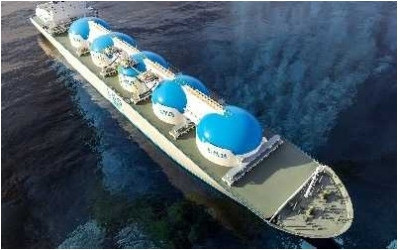June 19, 2017

Mental Health in the Oil & Gas Industry
In recent years, there have been examples of the industry becoming more aware of mental health and its importance, but the question remains – does oil & gas, for all the emphasis it places on physical safety, do enough when it comes to its peoples’ mental well-being? As part of our wider campaign on health and safety throughout the oil & gas industry, we’re taking a look at what mental health is, why it matters and the particular issues facing many oil & gas professionals.
Getting to grips with mental health
In simple terms, mental health is a person’s social, emotional and psychological well-being. Far from being related to mood or something you can just snap out of, it can impact everything, from how we see the world around us to how we manage stressful situations. Without support, somebody with a mental health condition typically suffers in terms of sleep, productivity and loneliness. In the worst case scenarios, problems can lead to self-harm and suicide.
1 in 4 people in the UK will experience a mental health problem each year MIND
Poor mental health can manifest itself in many ways, from mild anxiety, depression or a mix of the two to severe phobias, disorders and addictions. However it hits, the impact is always hard. Whether brought on by biological or experiential factors, poor mental health can make seemingly simple tasks seem impossible and seriously hinder day-to-day life. While mental health is unprejudiced to gender, it’s widely reported that for men in particular, there is a real stigma around admitting to struggling or even just confiding feelings. Instead of opening up and sharing serious feelings for risk of being dubbed weak, they tend to shoulder the burden themselves or—worse still—attempt to treat themselves with alcohol and other substances. A lack of understanding around the causes of mental health can be a further worry – mental health issues are not always linked to a distressing event or a broader feeling of discontentment with life. A happily married, wealthy and professionally successful person, with a good circle of friends and close family ties, could still find themselves overwhelmed.
Currently 450 million people suffer from mental or neurological disorders across the world World Health Organization
The industry needs to look at how it is monitoring and managing the mental wellbeing of employees, especially those in remote environments, where mental strain is often heightened. In a sector where physical medical health assessments are the norm, firms need to ensure mental health support is also readily available. While the physical wellbeing of individuals should always be the chief concern, considering employees’ mental wellbeing is also in businesses’ interests.
While support and action is required for genuine change, we can start to create a better environment for good mental health by talking about it and being open about the factors that confront many Oil & Gas professionals on a daily basis. While our sector is home to some of the best opportunities in the world, the work can be mentally demanding and physically isolating.
Specific issues that affect oil & gas professionals
We have eradicated, or controlled for, almost all the risk factors in the highly dangerous environment of oil and gas exploration and retrieval; the biggest risk factor we have left is our own refusal to respond to issues of mental health and wellbeing across the industry.Dr Steve Smith Senior Lecturer (Enterprise Fellow) in Mental Health and Wellbeing/ Enterprise Manager School of Nursing and Midwifery The Robert Gordon University
Often referenced as a perk, the travel associated with an oil & gas career can actually be a burden that goes much further than the pangs for home we all feel from time to time, whether on holiday or a work trip. Feelings of isolation and being cut off from loved ones can be severe in oil & gas workers, especially those working long stints in remote or offshore locations, or risky territories where communication with those back home might be limited. Rightly or wrongly, rigs, wells and other sites are often perceived as macho environments, where emotions are left at the door. As a result, it’s not uncommon for people to feel unable to share. Being away from loved ones, the people who know and understand you, can be tough and the feeling of loneliness, as well as any accompanying mental health issue, is only made worse by not having anybody to talk to about it.
However you look at it, oil & gas is an industry that regularly expects its people to make sacrifices. Alongside long, demanding stints away from home, employees are often stationed in desolate or hostile locations. This can lead to a lack of genuine down time, with offshore work being particularly draining, or spending a lot of time on edge in high-risk situations. In either scenario, stress and fatigue can quickly become overwhelming and could lead to mistakes that put the lives of others at risk. The pressure and expectation on employees can lead to inner conflict based on balancing a career with a family. Transitioning back to life at home and the accompanying loneliness is as much of a challenge. Feelings of being an outsider even at home and being more comfortable at work, with transient, non-committal relationships, make reintegration into home life another challenge.
It isn’t appropriate for physical health to be the only priority, never mind the only concern, of hiring companies. It takes incredible bravery to talk about mental health and ask for help. Oil & gas companies need to make it as easy as possible. Recruiters like Petroplan take steps to ensure the professionals it assesses for jobs are fully aware not only of the physical but also mental demands of working in the energy industry. Applicants don’t have to live far away from home for the environment to become stressful. Most of our clients do view mental well being as important and we look to support their convictions by probing an applicant’s motivations and experience and ensuring the candidate is advised of the working conditions and expectations for a position. We would welcome more official guidance on assessing people for this often invisible need.
“The oil and gas industry is committed to promoting the health and wellbeing of everyone who works in, or may be impacted by, our sector. Health in general, and mental health in particular, have been of great interest to our members and we have published several guides over the years, including managing the psychological risks of expatriation and assessing and managing fatigue risks.” Chris Hawkes, Safety Director at the International Association of Oil and Gas Producers






You can also use your social account to sign in. First you need to:
To connect your social account you must Acknowledge the Terms & Conditions and Privacy Policy